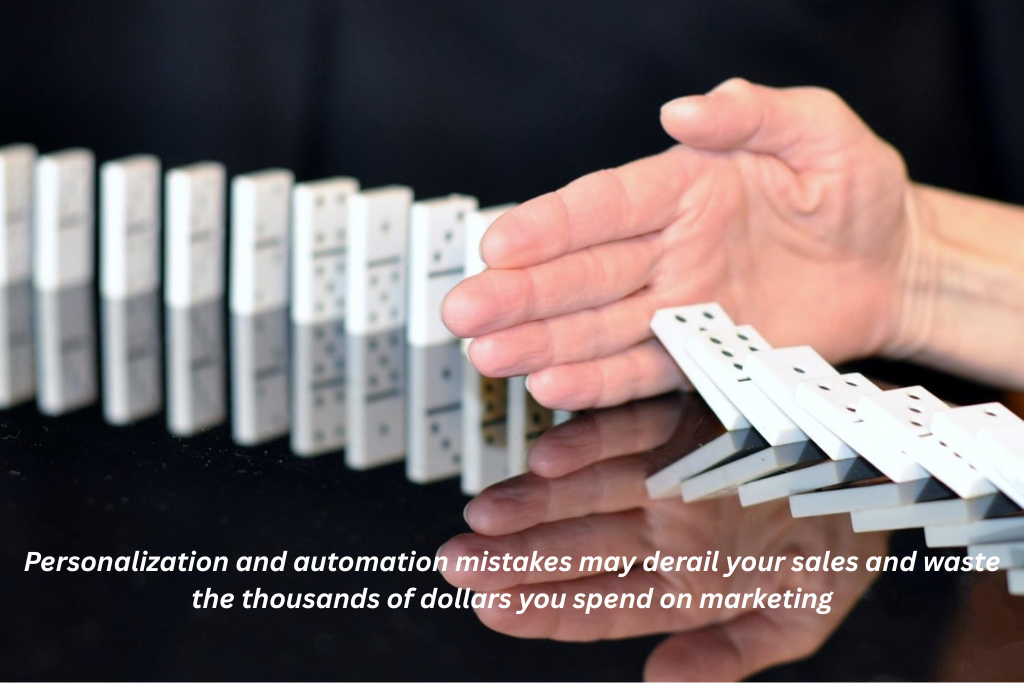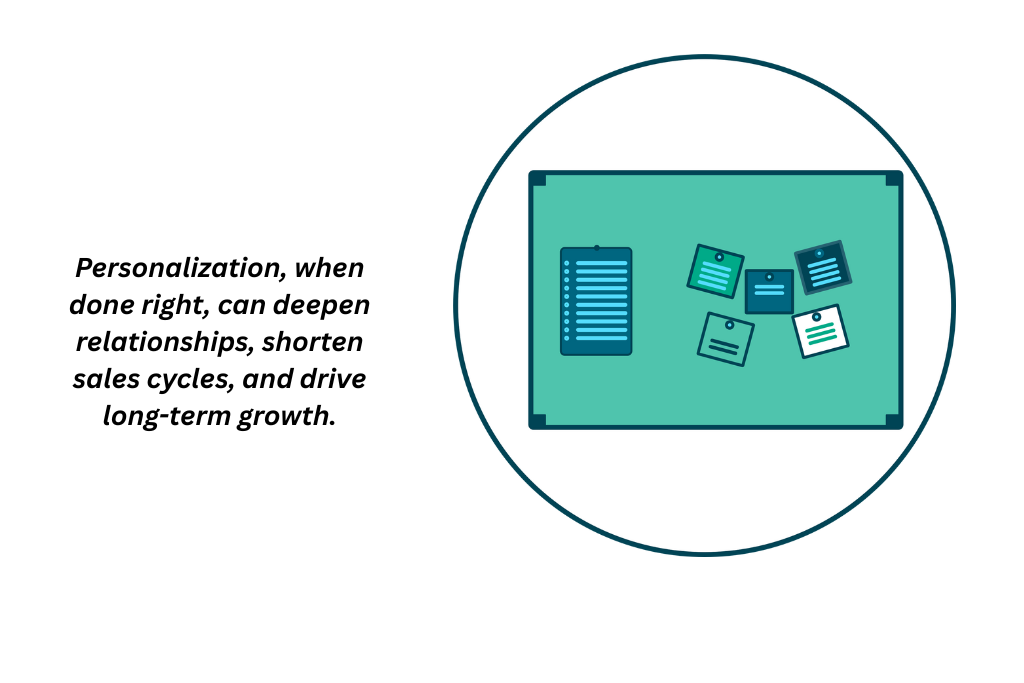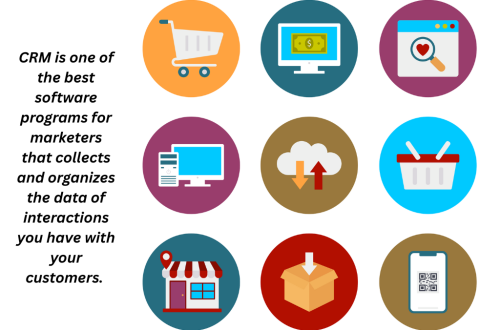
8 Major B2B Personalization Mistakes You Must Avoid in Customer-Driven Strategies
In this article, we uncover 8 critical B2B personalization mistakes that marketers make, and more importantly, how you can avoid them. Personalization in B2b marketing is now a dire need for a successful business. While rushing towards tailored emails, messaging, and product offers, companies fall into traps that do more harm than good. When not done strategically, several personalization and automation practices may derail your sales and waste the thousands of dollars you spend on marketing. Being SMEs or SMBs, you cannot afford that erosion and need a serious approach that helps you build smarter.
So here are those B2B personalization mistakes with the solutions to these issues.
Unnecessary Automation
The B2B relationship relies on trust, credibility, and long-term value. You need to address specific client pain points, industry challenges, or decision-making roles within the company. Without proper research, segmentation, and data analysis, the automated personalization might send the wrong message at the wrong time.
Overusing or misusing automation tools will make your pitch more robotic. This leads to a sense of impersonal or irrelevant interaction that damages customers’ trust and reduces engagement. The over-automation in B2B relationships strips away human connection and creates a generic experience of one-size-fits-all.
If customers feel they’re being “processed” instead of engaged, it can come across as lazy or out of touch, damaging your brand’s credibility and potential sales.
Solutions:
Use automation strategically and blend it with human interaction. When targeting critical touchpoints such as onboarding, high-value proposal, and support, review and refine the automated flows without sacrificing relevance. 
Misaligned or Off-message content
These messages are a critical mistake in B2B marketing personalization strategies as they confuse your potential clients instead of guiding them. Misaligned or generic messages signal to your client that you don’t understand their needs. The client assumes that you, instead of recognizing their role in the industry or stage in the decision-making process, are just trying to offer a beginner-level solution with an overly casual language.
An off-message content clashes with your brand tone or value, and the irrelevant content leads to lower engagement rates, ultimately reducing ROI.
Solutions:
To avoid off-message content, do research and develop a clear buyer persona, a content map that aligns with different stages of the B2B funnel, and cross-check the message’s alignment.
Overlooking Emerging Technologies
It’s one of the most costly mistakes in any industry. Overlooking emerging trends in B2b personalization strategies will limit your ability to stay competitive and responsive to buyers’ experience. Smarter personalization needs you to stay aware of the latest emerging tools to enhance your tailored content, timing, and offers. Ignoring them means you rely on outdated, less effective methods.
Also, manual personalization doesn’t scale efficiently. On the contrary, the business that adopts new technologies early delivers faster, more relevant, personalized experiences that put you at risk of falling behind.
Solutions:
Try new personalization tools before their full-scale adoption. Stay updated on B2B martech trends through industry publications and webinars. Train your team to ensure they can adapt to new technologies effectively.
Ignoring Data Accuracy
For companies focusing on customer-driven strategies, ignoring data accuracy is a major B2B personalization mistake. Inaccurate, outdated, or incomplete insight will lead to lost opportunities and sometimes embarrassing missteps.
We know that if marketing campaigns are based on faulty data, they waste time, money, and effort. You might target the wrong audience, push irrelevant messages, or misjudge the buyer’s stage in the funnel.
For instance, sending personalized message content with the wrong name, company, role, or interests makes your brand look careless and unprofessional. Repeated errors due to bad data signals indicate that your company is not paying attention and harming the long-term relationship with your client.
Solutions:
Clean, update, and enrich customer data frequently. Ensure cross-platform consistency by synchronizing email tools, CRM, and analytics platforms. Invest in tools that offer real-time data validation and enrichment from reliable sources. 
Neglecting A/B testing
Neglecting A/B testing is a significant mistake that prevents you from learning what works for your business. By performing A/B testing, you can evaluate how to engage your audience effectively.
It is because the small changes that might seem unimportant can dramatically impact engagement and conversion rates. Skipping testing means leaving potential gains on the table.
Without A/B testing, you’re relying on guesswork instead of data to shape your personalization tactics. You may continue running underperforming campaigns or investing in personalization tactics that aren’t resonating with your audience.
Solutions:
Make a routine to test key personalization elements such as CTAs, headlines, email copy, and landing page validations. Use clear metrics to evaluate performance. Apply insights across campaigns to refine your B2B personalization strategy.
One-way communication on social media
In B2B, long-term trust is key. B2B buyers today expect two-way interactions.
Only throwing out content without initiating real conversations leads to dissatisfaction in the audience, and they do not engage.
That’s the reason why brands should not treat social media as a broadcast channel This strategy is outdated and makes a brand unapproachable for their customers. Failing to engage with comments, questions, or feedback weakens the potential for building meaningful connections.
Two-way interactions give real-time insights into customer needs, preferences, and pain points. Ignoring this input means missing out on data-driven personalization.
Solutions:
Use polls, live Q&As, or customer spotlights to initiate meaningful conversations. Encourage comments, questions, and shares with engagement-driven content. Assign team members to actively monitor and respond to interactions.
Intrusive targeting
Practicing intrusive targeting instead of a two-way interaction leads to disengaging your audience. It not only damages brand perception but also weakens the potential connection built up with your client. Two-way conversing gives real-time information about your client’s needs, preferences, and pain points; ignoring this input means missing out on data-driven personalization.
Solutions:
Question your client and encourage them to share the engagement-driven response. Assign team members to actively monitor and respond to these interventions.
Relying on Generic Personalization Tools
Generic personalization tools offer surface-level engagement as they simply insert names into templates and do not truly personalize. These tools fail to address the buyer’s needs and can’t deliver role-specific content. Many businesses using the same platforms end up pushing similar messaging, making it hard to stand out. Relying too heavily on automated tools without customization creates missed opportunities for deeper engagement.
Solutions:
Choose tools that allow deeper segmentation and behavior-based triggers. Supplement automation with manual personalization for high-value accounts. Audit your personalization stack to ensure it aligns with your unique audience’s needs and business goals.
Conclusion
Personalization, when done right, can deepen relationships, shorten sales cycles, and drive long-term growth. But when done carelessly, it feels robotic and intrusive, damaging the trust that you are trying to build up. By avoiding these 11 B2B personalization mistakes, you can personalize things right with a better outcome.






One Comment
Pingback: